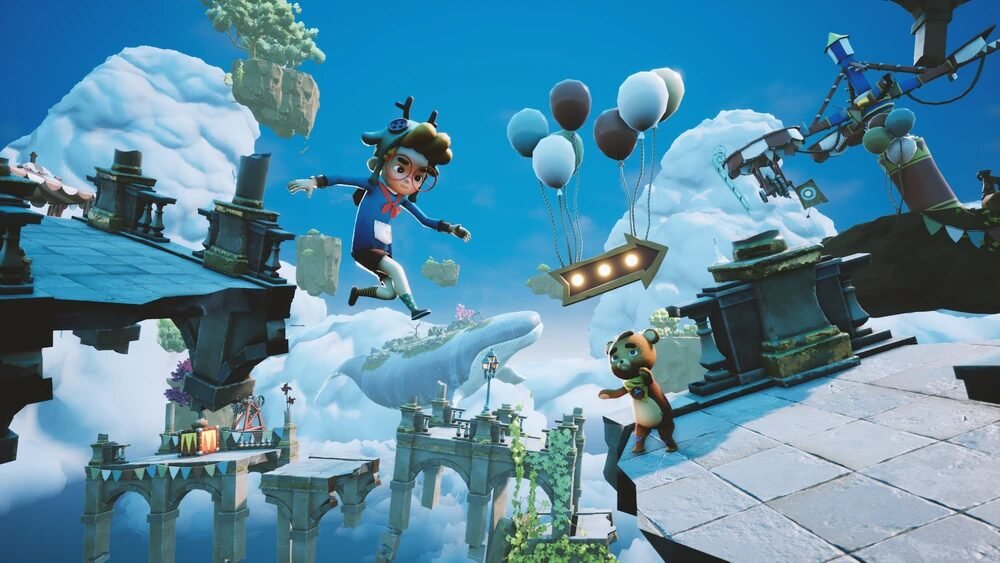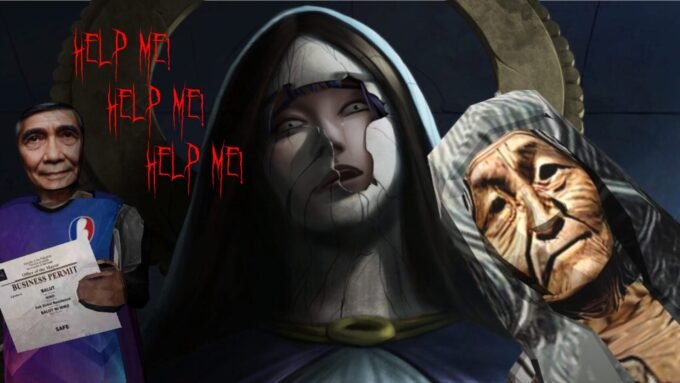Daydream: Forgotten Sorrow celebrates its anniversary one year after its release. Having won multiple awards, such as Best Art at the Indie Blast Awards, let’s look into this game’s playability one year on.
Disclaimer: The content discussed further could be upsetting, especially for those dealing with loss and grief.
The Story
Daydream: Forgotten Sorrow is a puzzle platformer that centres its themes around the idea of death. An inevitable, death is a presence which forces an older man on his deathbed to reimagine himself as a child again. Griffin, the child we play as, is the apparition of the man’s dissatisfaction with life, harbouring his regrets and fallen dreams.
As well as this, we have Birly, Griffin’s teddy. Birly acts as the embodied spirit of the older man’s dead son. Griffin takes solace in his company as they navigate through the older man’s subconscious.

You will meet several characters during the navigation such as the archer Mira. Gendered ideology finds itself confronting an abusive father, portrayed as a gigantic night. On the other hand, we confront the mother, a pillar of comfort and fragility, who protects Griffin.
Due to the narrative themes of the Daydream: Forgotten Sorrow’s story, the game resembles others like ‘Little Nightmares’. The style is distinct in that it deals with topically difficult themes in fitted in a whimsically, beautiful and frightening world.
Daydream: Forgotten Sorrow Gameplay

As a puzzle platformer, Daydream: Forgotten Sorrow has multiple levels which challenge your problem-solving skills. The puzzles are challenging, with several deaths and attempts needed before you can beat the level. As a casual gamer, this game will be mildly frustrating, its difficulty levels varying from puzzle to puzzle.
The visuals of the game are sweet. Emulating Little Nightmares, the game homages the simplistic cartoonish style and achieves this with good effort. Not breathtakingly so, put pretty enough when solving the puzzles, you feel immersed in what you are doing.
The story takes a little time to get to the point and introduce itself. Because of this, there is a reliance on music to help sell the horror aspects of the game. This is not wholly negative, as music is an important aspect of horror-just take a look at Jaws and the infamous soundtrack that viewers still love today. The music fits within its theme and does well to sell the story while allowing players to immerse themselves in it.
Overall Thoughts
Daydream: Forgotten Sorrow is a good game. The story is unique and interesting, having mature and thoughtful themes. While it does take time for the game to divulge its message, the payoff is interesting and enjoyable. Combined with the visuals, the design has been well thought out and fits comfortably as a puzzle platformer.
However, if you decide to try this game as a fan of Little Nightmares, I would urge you to distance the two. The story and design are different enough that expectations could not be met if approaching the game with this idea.
As mentioned, the puzzles can be frustrating, and some bugs have been complained by reviewers. The game itself, however, is interesting and fun enough to enjoy. One year after its anniversary, the game still holds the same charms it did when it was first released.
Follow Blooing on Facebook, YouTube, and TikTok for more Indie Game news and reviews.

















Leave a comment